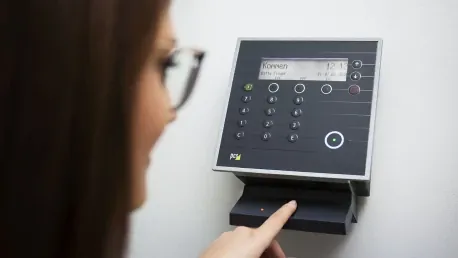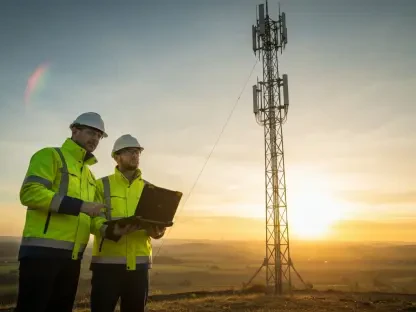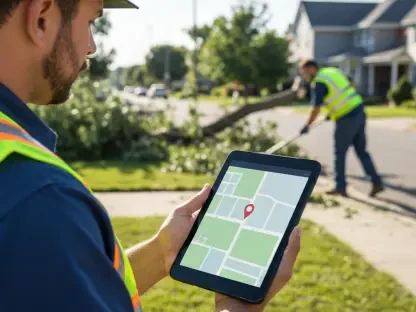The landscape of biometric technology is rapidly evolving, and contactless biometrics is at the forefront of this transformation. The market for contactless biometrics is poised for significant growth, driven by the increasing need for secure and hygienic verification methods. The COVID-19 pandemic has accelerated the adoption of technologies that minimize physical contact, and this trend is expected to continue over the next decade. This article delves into how contactless biometrics technology will reshape various industries by 2033. As industries adapt to new norms of operations, the emphasis on seamless, secure, and hygienic verification methods becomes even more crucial.
The Surge of Contactless Biometrics Post-Pandemic
The COVID-19 pandemic has been a catalyst for change in many sectors, and contactless biometrics technology is no exception. As hygiene and safety concerns became paramount, the adoption of contactless solutions soared. Businesses and governments alike realized the need for secure yet hygienic verification methods, and contactless biometrics emerged as a robust solution. Technologies such as facial recognition, iris scanning, and voice recognition have seen accelerated adoption, offering seamless and contact-free user experiences. Industries are increasingly prioritizing health and safety in this new era, making the shift towards contactless biometrics a long-term transformation rather than just a temporary trend.
In the post-pandemic era, technologies that were once seen as emerging or niche are now becoming mainstream. Companies are integrating contactless biometrics into their systems to ensure both security and well-being for their employees and customers. From healthcare settings to public transportation, the applications of contactless biometrics are expanding at an unprecedented rate. The ongoing developments in this field are set to offer even more advanced and user-friendly applications in the coming years. As a result, we can expect a significant increase in the global adoption of contactless biometrics, which will, in turn, drive innovation and further advancements in this technology.
Enhancing Security Systems with Biometric Innovation
Security has always been a major concern for organizations across the globe, and traditional methods like passwords and PINs are gradually being overshadowed by more sophisticated systems. Contactless biometrics offer enhanced security by providing unique identification methods that are difficult to replicate. Facial recognition, in particular, has gained prominence in access control and surveillance systems, enabling secure authentication without the need for physical touch. This not only increases security but also adds a layer of convenience for users who no longer have to remember complex passwords or carry access cards.
The use of contactless biometrics in security extends beyond corporate environments. Government agencies, especially in defense and law enforcement, have started employing these technologies to strengthen security measures. The integration of biometric systems in national ID programs, border control, and criminal identification is revolutionizing the way security is managed. By reducing the margin for human error and eliminating the possibility of identity theft, contactless biometrics make for a much safer and efficient system. This shift towards more secure and efficient systems is expected to advance further by 2033, making contactless biometrics a cornerstone of modern security infrastructure.
Transforming Financial Services and Retail
One of the most significant impacts of contactless biometrics will be observed in the financial services and retail sectors. With the rise of digital banking, the need for secure authentication methods has become paramount. Biometric technologies offer a reliable solution for identity verification, making transactions more secure and reducing fraud. Banks and fintech companies are increasingly integrating facial and voice recognition into their services to enhance customer experience and security. This move towards integrating biometrics ensures that even as financial transactions get increasingly digital, they remain secure and trustworthy.
Retail is another sector where contactless biometrics are making strides. From secure payment systems to personalized shopping experiences, biometric technologies are being leveraged to transform retail operations. For instance, facial recognition can be used for seamless checkout processes and targeted marketing, improving customer satisfaction. In this way, biometrics not only enhance security but also provide added convenience for consumers. As the technology matures, its applications in financial services and retail are expected to expand, offering even more innovative solutions by 2033. Retailers will benefit from increased customer loyalty and reduced operational costs, while consumers will enjoy a more secure and personalized shopping experience.
Revolutionizing Healthcare with Biometrics
The healthcare industry stands to benefit enormously from the adoption of contactless biometrics. With a growing need for efficient and secure patient identification systems, biometric technologies offer a promising solution. Iris and facial recognition can streamline patient check-ins, ensuring quick and accurate identification. This not only enhances patient experience but also reduces the administrative burden on healthcare staff. The ability to quickly and accurately identify patients can also minimize the risk of medical errors, thereby increasing the overall quality of healthcare services.
Moreover, the use of biometric technology in medical records management ensures data security and patient privacy. With the ability to provide secure access to sensitive information, biometrics can prevent unauthorized access and data breaches. This is particularly crucial in an era where cyber threats are becoming increasingly sophisticated. The healthcare industry is poised for significant advancements as contactless biometrics become more integrated, offering improved patient care and security by 2033. The technology will likely evolve to offer even more advanced features, such as integration with wearable devices for continuous health monitoring, making healthcare more personalized and proactive.
Automotive Industry Embracing Biometric Advances
The automotive industry is also witnessing a surge in the adoption of contactless biometrics. As vehicles become more advanced, the need for secure and personalized access mechanisms has grown. Biometric technologies offer an ideal solution by enabling keyless entry and personalized settings. Facial and voice recognition are being used to provide a highly personalized and secure driving experience, eliminating the need for physical keys or traditional authentication methods. This not only enhances the user experience but also adds a significant layer of security.
In addition to enhancing security, biometrics are also being integrated into vehicle infotainment systems. This allows for personalized entertainment options and seamless user experiences, contributing to driver convenience and satisfaction. Features such as voice-activated controls and facial recognition for seat adjustments can make driving more comfortable and enjoyable. As the automotive industry continues to innovate, the role of biometric technology is set to expand, making vehicles smarter and more secure by 2033. These advancements will likely pave the way for fully autonomous vehicles that can ensure safety and personalization through advanced biometric systems.
Future Trends and Innovations
The landscape of biometric technology is rapidly evolving, with contactless biometrics leading this transformation. Propelled by the urgent need for secure and hygienic verification methods, the market for contactless biometrics is set to experience substantial growth. The COVID-19 pandemic has accelerated the uptake of technologies aimed at minimizing physical contact, a trend predicted to persist over the next decade. This piece explores how contactless biometrics technology will revolutionize various sectors by 2033, as industries pivot to new operational norms. The heightened emphasis on seamless, secure, and hygienic verification methods underscores the critical role of contactless biometrics in the future. From retail and healthcare to transportation and banking, numerous sectors are likely to adopt these technologies to enhance both security and user experience. This shift is not just a response to immediate health concerns but also a long-term strategy to build resilient and adaptable operational frameworks. As these technologies evolve, the importance of maintaining robust data privacy measures will also become paramount, ensuring that user trust is upheld.









